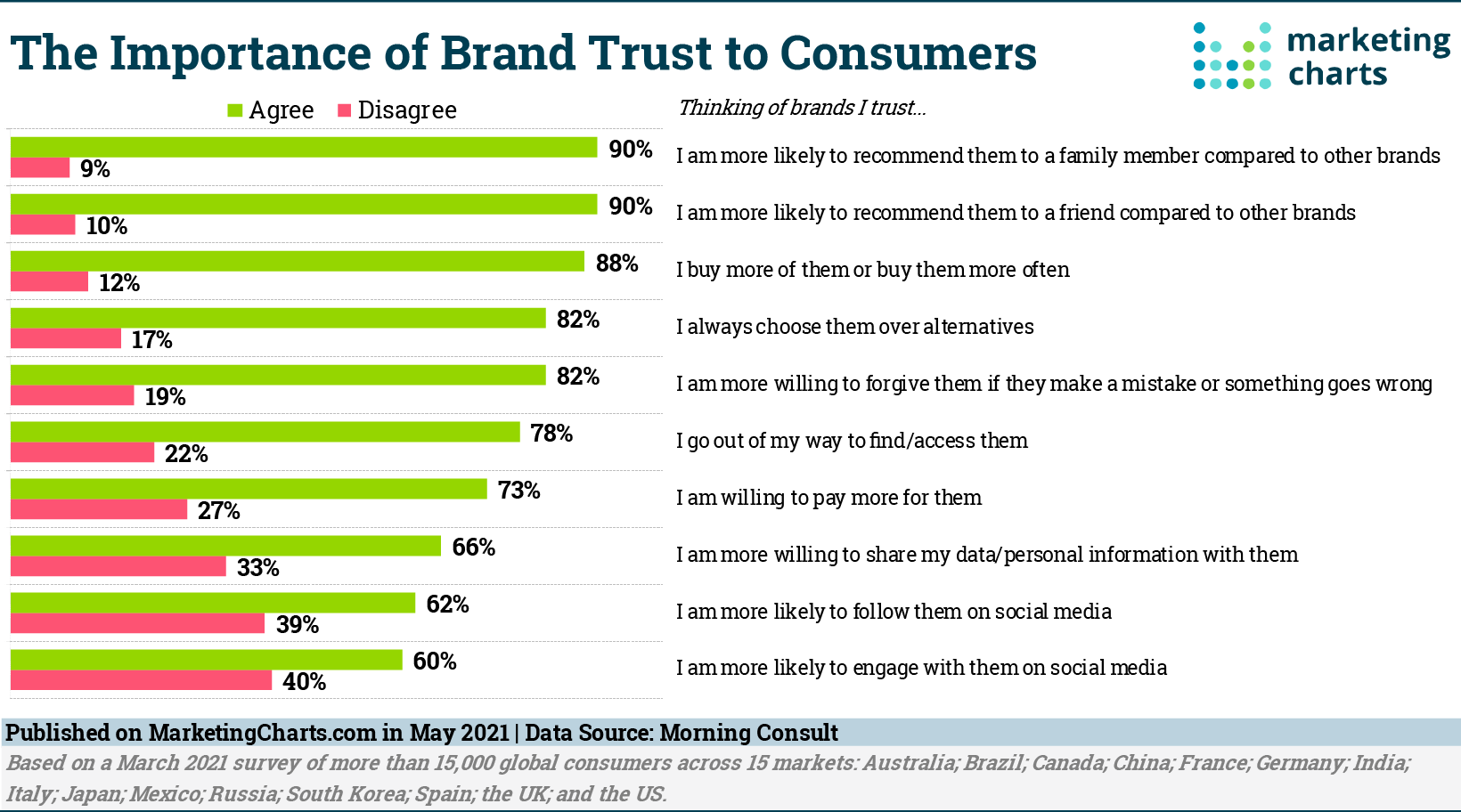Is trust the magic, missing ingredient?
An exploration of the importance of trust in decision-making, and the role that digital can play.

Tl;dr
Trust is an incredibly important factor in how and where audiences choose to spend their time, money, and attention.
Cultural organisation should be thinking about their product and customer experience through this lens.
Digital touchpoints are really important.
I wrote something a few weeks ago about the shifts in where audiences are choosing to spend their time and attention.
In that article I wrote that I thought cultural organisations needed to think more about the value they offered their audiences, and the underlying motivations for audiences choosing to spend time and money with them.
Trust & brand
When I shared the piece on Linkedin, David Reece at Baker Richards (whose work I referenced in the article) commented:
“I'd also add that trust is also missing. Look at the things that are selling right now, big name, popular stuff, the trust is with the production, the performer, the name - and that takes out the risk and increases value to consumers.”
I completely agree with David’s comment.
trust /trʌst/ noun: firm belief in the reliability, truth, or ability of someone or something.
It made me think about conversations I’ve had in the past with Rob Macpherson at Impakt (where I am Strategic Director) about the importance of your brand in building consumer trust, and the related importance of how brands exist in digital spaces.
Rob neatly summarises brand as follows:
Brand is…
How the ideas you stand for in people’s minds…
are made real in the world by your actions…
in a recognisable verbal and visual style.
Your brand is what sets people’s expectations and opinions of you. Their expectations and opinions of you in turn will influence how much they trust you.
Trust is built in a variety of ways, big and small, over a long time. You need to deliver consistently, and meet (or exceed) people’s expectations.
This is important across everything you do, but some areas are perhaps more important than others.
Two key areas are:
- Product experience (peoples’ experience of whatever your thing is)
- Customer experience (how you treat them)
Which is all well and good when it comes to the audience you already have, but what about someone who has never engaged with you.
Again, trust is key here.
This chart shows that the likelihood of people to recommend a brand to friends and family members increases with brands they trust.
If you are a trustworthy brand, people will recommend you.

This chart also neatly encapsulates the power of brand trust overall (this data is from 2021). The findings are from Morning Consult’s annual Most Trusted Brands report (in 2023, the most trusted brands were Band-Aid, UPS, and Amazon).
People choose trustworthy brands over others, they spend more money with them, and they are more willing to engage with them in a variety of other ways.
The Morning Consult work also highlights just how hard-to-earn and resilient trust is:
“We don’t see big changes in the metric from year to year, giving established brands a large leg up on aspiring competition”
The digital layer
If we use Rob’s definition above, and consider the importance of product and customer experience, then your digital experiences will play a large part in setting people’s understanding and expectations of your brand. And in establishing and maintaining their trust in you.
In 2005 a research study was carried out looking at “whether trusted brands are important in determining brand outcomes in consumer markets. Specifically, we study whether trust facilitates obtaining superior brand outcomes in terms of market share and advertising efficiency”.
“The amount of knowledge necessary for trust is somewhere between total knowledge and total ignorance. Given total knowledge there is no need for trust and given total ignorance there is no basis upon which to rationally trust. Available knowledge, and “good reasons” serve as foundations for trust decisions, the platform from which people make leaps of faith, like those involved in trusting.”
Are Trusted Brands Important?, 2005, Chatterjee and Chaudhuri
Digital touchpoints - your website, your email marketing, your social media accounts - are likely to be the first way(s) that people discover and interact with you.
Your website, for example, will be seen, and interacted with, by more people than almost any other single touchpoint.
It is through these experiences that you both create “available knowledge” and establish the “good reasons” (mentioned in Chatterjee and Shaudhuri’s research - quoted above) for people to decide to trust you initially.
These digital experiences will be also key channels for customer experience and, for many, will also form part of their product experience.
If your digital experience isn’t meeting (and exceeding) your audience’s expectations then their trust in you will be eroded, and that could be disasterous.
The 2022 Adobe Trust report underlines the importance of trust:
“More than half (55%) of global consumers say they will never give the brand their business again when trust is broken”
User expectations
So what are user expectations when it comes to digital experiences?
They vary depending on where you look for answers, but time and again you see the same fundamental elements being mentioned.
Performance:
Users expect digital experiences to load quickly, and to feel quick (“what is perceived performance?”). Studies have shown that “40% of users will leave a site if take more than three seconds to load”.
Design:
Users make up their mind about how ‘good’ your digital experience is almost instantly (“you have 50 milliseconds to make a good first impression”), and those first impressions are almost all influenced by design (“first impressions are 94% design related”).
The impact of poor design is not just on these first impressions, it can also have a cumulative effect and do lasting damage to what your users think of you (“we unlock our phones every 5.6 minutes, meaning a single bad design decision can pop up again and again for a user throughout the day”).
User experience:
A research study demonstrated that “customer experience, ease of use, and trust have a simultaneous effect on repurchase intention” and another that “customer care, information content and visual clarity are drivers of trust”, more starkly “88% of online users won’t return after a bad experience”.
This stuff isn’t rocket science.
There is loads of good practice to point at, and yet time and again I see digital projects at cultural organisations get bogged down when making decisions in these areas and ending up with messy or just simply bad choices being made in these key areas.
The decline in trust underlines its importance
In an age where trust in institutions is declining (Edelman’s 2023 Trust Barometer report makes particularly depressing reading in this area), and individuals such as influencers are also being seen as less trustworthy (“Nearly 90% of consumers no longer trust influencers, new study finds”) it is becoming increasingly difficult for trust to be built and sustained.
Yet withi this context the importance of trust is not declining.
And this is precisely why I think everyone, and cultural organisations in particular, should be thinking more carefully about the question of trust.
How do you become (and remain) a trusted voice for your audience? And how do those choices manifest in everything you do, in a way that is unique to you?
To return to Rob’s definition, how are they “made real in the world by your actions…in a recognisable verbal and visual style.”